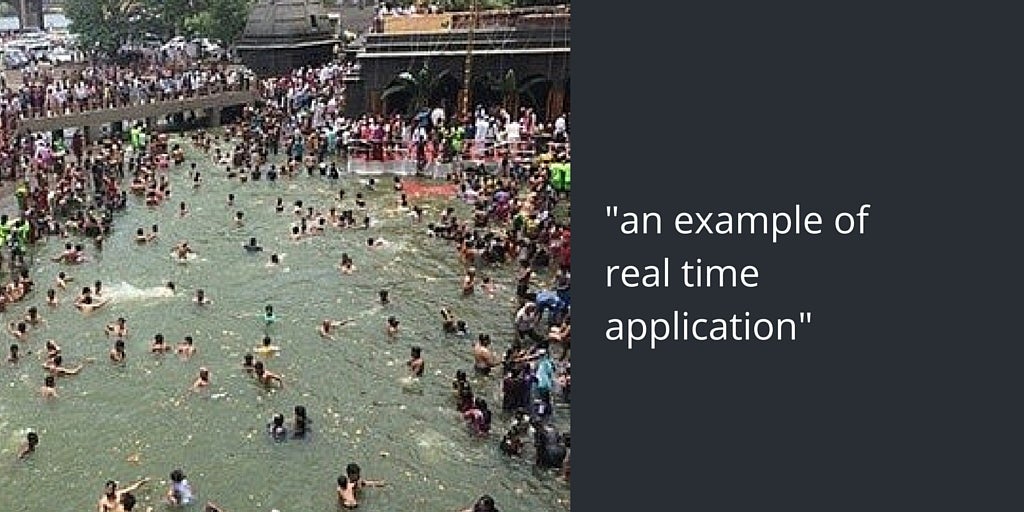September, 24, 2015 — From July through September this year, up to 30 million people are traveling to the cities of Nashik and Trimbakeshwar in India to bathe in the holy waters of the Godavari River, as part of the Kumbh Mela Hindu religious festival. Amidst this mass gathering—supported by acres and acres of temporary parking lots, police stations, fire stations, health clinics, streetlights and toilets—a small band of health and IT experts from the U.S. and India has introduced a new mobile health surveillance system to help keep the millions of visitors healthy while they’re at the festival.
The Harvard South Asia Institute’s Jana Swasthya Project (“Jana Swasthya” means “public health” in Hindi), has two goals: One is to conduct disease surveillance in real time to help health workers at the festival nip potential outbreaks in the bud and allocate health resources wisely. Another is more long-term: to conduct a mass screening program for oral health and hypertension for visitors and workers at the festival.
Tracking disease
The surveillance system, implemented in late August, proved useful right away. For example, after data gathered by the system revealed a recent surge in cases of diarrhea, “within two hours the government had deployed someone to test all the water,” said team leader Satchit Balsari, research fellow at Harvard T.H. Chan School of Public Health’s FXB Center for Health and Human Rights and chief of the Weill Cornell Global Emergency Medicine Division. “That’s an example of a real-time application.”
— Photo courtesy Jana Swasthya Project


